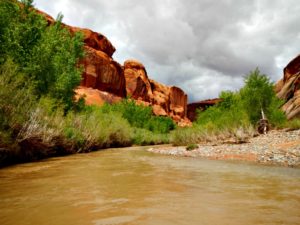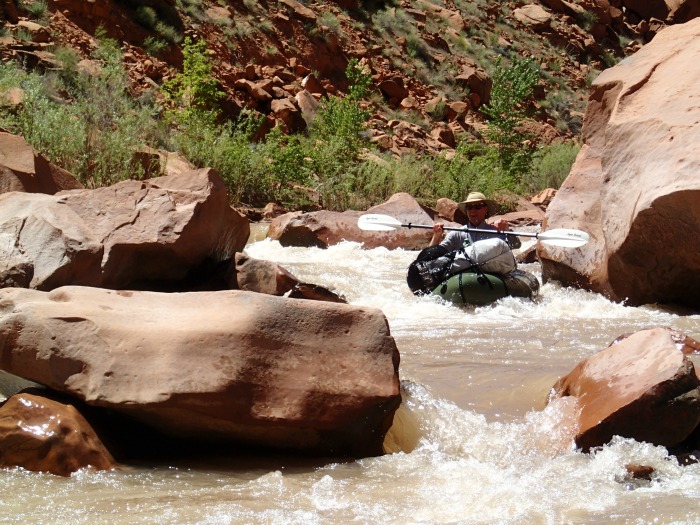Through the Walton Family Foundation‘s grantees and partners, nearly 400 miles of Utah’s Escalante River and its tributaries have been treated for invasive plants that have been choking out native species, threatening the river’s health and disrupting its flow.
Environment Program Officer Peter Skidmore paddled the river to see firsthand the benefits of our partners’ work. These are excerpts from his journal on the 12-day journey.
 When we made it downriver where Lake Powell was recently inundating the canyon, beyond where Russian olive trees had been present or treated, I saw that all the new vegetation is native willows and cottonwood, and the recovery seems to be a combination of the tamarisk beetle and lowering of the river so that tamarisk tree roots are no longer receiving water.
When we made it downriver where Lake Powell was recently inundating the canyon, beyond where Russian olive trees had been present or treated, I saw that all the new vegetation is native willows and cottonwood, and the recovery seems to be a combination of the tamarisk beetle and lowering of the river so that tamarisk tree roots are no longer receiving water.
But the most impressive thing is that nearly 100% of new vegetation is native. This is such an encouraging response to what we’ve been hoping to achieve.
The native vegetation has rebounded so quickly and thoroughly that, even though I carry a map of the year each segment of river was treated by our partners, I cannot differentiate among them now. What tremendous capacity these systems have for recovery, if given the chance!
See full Walton Family Foundation article by Peter Skidmore.

